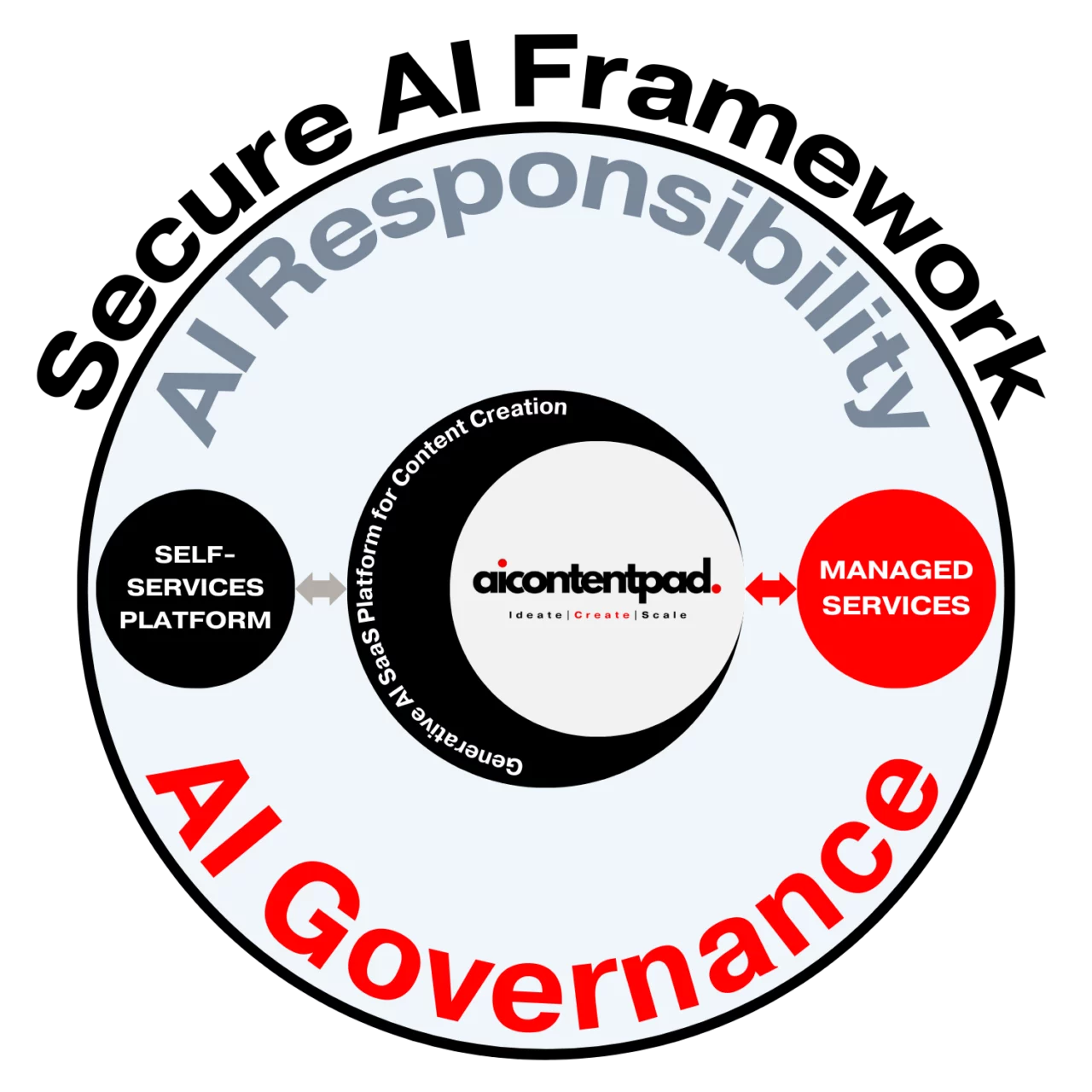Marketing Budget 2024: How Much to Spend and Where to Allocate
Learn About Marketing Budget 2024: How Much to Spend and Where to Allocate
Marketing Budget 2024: An Odyssey Beyond Traditional Bounds
In the swirling vortex of the digital age, marketers stand on the precipice, gazing into the vast expanse of Marketing Budget opportunities that 2024 unfurls. Ah, the future—mysterious, promising, and rife with unparalleled challenges. To truly conquer the marketing landscape of the coming year, one must not merely be a passenger but the pilot, navigating through the intricate tapestry of strategies and investments. And it begins with understanding the realm of Marketing Budget 2024.
What role does meticulous marketing planning play in this dynamic ecosystem? It’s the lighthouse guiding ships through stormy seas, ensuring no resources are squandered in digital transformation disruption. Like a maestro orchestrating a symphony, the art and science of marketing planning harmoniously blend to achieve a crescendo of success. Every note, every instrument, every pause—meticulously crafted and timed. As we wade into the depths of 2024, the stakes have never been higher.
But here’s the rub.
In this era, where innovation emerges from the most unexpected corners, a mere budget won’t suffice. It requires vision, foresight, and the audacity to challenge the status quo. The Marketing Budget 2024 isn’t just a ledger of numbers—it’s a manifesto, a declaration of intent, a roadmap to transcend traditional paradigms. It beckons marketers to think beyond the ordinary, to envision a world where boundaries are mere illusions.
So, where do you stand as the clock ticks down, ushering in a new age of possibilities? Will you merely observe from the sidelines, seize the helm, steer your brand to uncharted territories, and etch your legacy? The odyssey of Marketing Budget 2024 awaits. Dive deep, chart the unknown, and let your brand’s story be the beacon for others to follow. The future is now. And it’s yours for the taking.

Marketing Budget Allocation
Digital Marketing Benchmark Report
This digital marketing benchmark report aims to provide insights and analysis on the current state of digital marketing, including key trends, industry standards, and best practices.
What is a Marketing Budget?
A marketing budget is a financial roadmap that delineates the monetary outlay for promotional endeavors and advertising campaigns of a business.
It’s not merely a number; it’s a strategic tool. This financial blueprint encompasses various facets – from print and television commercials to digital campaigns and events.
Businesses can judiciously invest in initiatives that bolster brand visibility and sales by allocating a designated sum.
Why is it Important to Have a Marketing Budget?
In the dynamic realm of business, the adage “You have to spend money to make money” rings particularly true. A marketing budget serves as the linchpin between strategy and execution.
Here’s why:
- Financial Prudence: It prevents overspending by clearly distinguishing the funds available for marketing activities.
- Targeted Investments: Allocating resources judiciously allows for targeted campaigns that resonate with the desired audience.
- Performance Metrics: It facilitates the measurement of ROI, enabling businesses to gauge the effectiveness of different campaigns.
- Future Planning: Historical budgetary data aids in refining and optimizing future marketing strategies.
How Much Should You Budget for Marketing in 2024?
Determining a precise figure for marketing in 2024 requires a confluence of past data, industry benchmarks, and future aspirations.
On average, businesses earmark 10 – 15% of their total revenue for marketing endeavors. However, this figure may escalate for burgeoning enterprises or those in particularly competitive niches.
As we tread deeper into the digital age, the emphasis on digital marketing has burgeoned, so businesses should be sensible in aligning their budgets with contemporary trends.
As the CMO for a $50 million technology firm, you must allocate a marketing budget that aligns with your company’s goals and objectives. While there’s no one-size-fits-all answer, a general rule of thumb is to allocate between 7% to 12% of total revenue towards marketing. In your case, this would translate to a marketing budget of between $3.5 million and $6 million.

Here are some factors to consider when determining your marketing budget:
Industry: Marketing budgets tend to be higher in industries with higher customer acquisition costs, such as software and technology.
Company stage: Early-stage companies may need to allocate a larger percentage of their revenue to marketing to grow quickly.
Growth goals: If you aim for aggressive growth, you must invest more in marketing to reach new customers and expand your market share.
Marketing channels: The marketing cost will vary depending on your channels. For example, digital marketing tends to be more cost-effective than traditional marketing.
Marketing mix: The specific mix of marketing activities you use will also impact your budget. For example, if you’re focused on content marketing, you must allocate funds for content creation and distribution.
Once you’ve considered these factors, you can develop a detailed marketing budget that outlines your spending for each marketing channel and activity. Be sure to track your results to adjust your budget as needed.
Here is a breakdown of how you might allocate your marketing budget:
| Channel | Percentage of budget |
|---|---|
| Digital marketing | 50% |
| Content marketing | 20% |
| Public relations | 15% |
| Sales enablement | 10% |
| Events | 5% |
Of course, this is just a suggestion, and your actual allocation will vary depending on your specific needs.
Here are some additional tips for budgeting for marketing:
- Set clear goals and objectives for your marketing campaigns. This will help you determine how much you need to spend to achieve your desired results.
- Track your marketing performance regularly. This will help you identify the most effective campaigns and adjust your budget.
- Be flexible with your budget. Things change, and you may need to adjust your budget as your marketing needs evolve.
Following these tips, you can develop a marketing budget to help you achieve your company’s goals and objectives.
Factors to Consider When Setting Your Marketing Budget
- Business Lifecycle: A nascent startup might need to invest more aggressively than an established conglomerate.
- Industry Norms: Scrutinize the standard budgetary allocations in your niche to ensure competitiveness.
- Historical ROI: Past campaigns offer invaluable insights. Analyze their returns to finetune future budgets.
- Economic Landscape: Economic downturns or booms can influence consumer behavior, necessitating budgetary adjustments.
- Goals & Aspirations: Your budget should mirror your business goals. Whether it’s brand awareness, sales, or customer engagement, allocate funds accordingly.
Why your business lifecycle matters for your budget: a budding startup must invest more aggressively than an established conglomerate.
How Much Should Be Budgeted for AI?
Artificial Intelligence (AI) is no longer a futuristic fantasy but an integral facet of modern marketing strategies. The allocation for AI should be commensurate with its potential impact on your business.
On average, forward-thinking enterprises allocate 15-20% of their marketing budget to AI-driven initiatives. This includes chatbots, predictive analysis, personalized marketing, and ad campaigns.
As AI technology burgeons in sophistication, its return on investment is likely to amplify, making it a rational avenue for investment. Remember, the key is to invest in AI and synergize it with your overarching marketing strategy.
Budgeting as a percentage of revenue
A common rule of thumb is to budget 10 – 15% of your total revenue for marketing. However, the amount you need to spend will vary depending on your industry, business goals, and target market.
Step-by-step method on how to budget as a percentage of revenue:
- Calculate your total revenue. This includes all the revenue your business generates, both recurring and non-recurring.
- Determine your marketing goals. What do you want to achieve with your marketing budget? Are you trying to increase brand awareness, generate leads, or drive sales?
- Research industry benchmarks. How much do other businesses in your industry spend on marketing as a percentage of revenue? This will give you a good starting point for setting your budget.
- Set a percentage of revenue to allocate to marketing. A common rule of thumb is to budget 7-10% of your total revenue for marketing. However, the amount you need to spend will vary depending on your industry, business goals, and target market.
- Break down your budget by channel. Once you know how much you want to spend on marketing, you must allocate that budget across different marketing channels, such as paid advertising, content marketing, and social media marketing. The best way to do this is to focus on the channels most likely to reach your target market and achieve your marketing goals.
Here is an example of how to budget as a percentage of revenue:
Total revenue: $1 million
Marketing goals: Generate 100 new leads per month
Industry benchmark: 8% of revenue spent on marketing
Marketing budget: $80,000
Budget breakdown by channel:
- Paid advertising: $40,000
- Content marketing: $20,000
- Social media marketing: $20,000
It is important to note that this is just an example. Your actual marketing budget may vary depending on your specific circumstances.
Here are some tips for budgeting as a percentage of revenue:
- Start with a small budget and increase it as your revenue grows. This will help you manage your risk and ensure you spend on marketing effectively.
- Track your results and adjust your budget accordingly. If certain channels are not performing well, you can reallocate your budget to other, more effective channels.
- Don’t be afraid to experiment. There is no one-size-fits-all approach to marketing budgeting. The best way to determine what works for your business is to experiment with different channels and strategies.
I hope this helps!
Budgeting based on your marketing goals

If you have specific marketing goals in mind, such as generating a certain number of leads or increasing brand awareness, you can use those goals to set your budget. For example, if you want to generate 100 new leads per month and your cost per lead is $150, you need to budget $15,000 for lead generation.
Step-by-Step Method for Budgeting Based on Your Marketing Goals
- Identify your marketing goals. What do you want to achieve with your marketing efforts in 2024? Do you want to increase brand awareness, generate leads, drive sales, or something else? Once you know your goals, you can develop a budget to help you achieve them.
- Research the cost of achieving your marketing goals. How much does it cost to generate a lead in your industry? How much does it cost to run a paid advertising campaign? How much does it cost to hire a content writer? Once you know the average cost of each marketing activity, you can estimate your budget.
- Prioritize your marketing goals. Not all marketing goals are created equal. Some goals may be more important to you than others. For example, if you’re a new business, you may prioritize generating leads over increasing brand awareness. Once you’ve prioritized your goals, you can allocate your budget accordingly.
- Allocate your budget to different marketing channels. Once you know how much you want to spend on marketing and which goals are most important to you, you can allocate your budget to different marketing channels. For example, you may spend 50% of your budget on paid advertising, 30% on content marketing, and 20% on social media marketing.
- Track your results and adjust your budget as needed. It’s important to track the results of your marketing campaigns to see what’s working and what’s not. If you find that a particular channel is not performing well, consider reducing your budget and allocating those resources to a different channel.
Example:
Let’s say you’re a new business that sells SaaS products. Your marketing goals for 2024 are to generate 100 new leads per month and increase brand awareness by 20%.
Step 1: Identify your marketing goals.
- Generate 100 new leads per month.
- Increase brand awareness by 20%
Step 2: Research the cost of achieving your marketing goals.
- Average cost per lead in the SaaS industry: $100
- Average cost per month for a paid advertising campaign: $500
- Average cost per month for a content writer: $200
Step 3: Prioritize your marketing goals.
Since you’re a new business, generating leads is more important to you than increasing brand awareness. Therefore, you’ll prioritize your lead generation goal.
Step 4: Allocate your budget to different marketing channels.
You allocate 50% of your budget to paid advertising, 30% to content marketing, and 20% to social media marketing. Your budget for each channel would look like this:
- Paid advertising: $500/month
- Content marketing: $300/month
- Social media marketing: $200/month
Step 5: Track your results and adjust your budget as needed.
You track the results of your marketing campaigns and find that your paid advertising campaign generates the most leads. You decide to increase your paid advertising budget and reduce your content marketing budget.
By following these steps, you can create a marketing budget that is aligned with your goals and gives you the best chance of success.

Budgeting based on your marketing channels
Once you know how much you want to spend on marketing, you must allocate that budget across different marketing channels, such as paid advertising, content marketing, and social media marketing. The best way to do this is to focus on the channels most likely to reach your target market and achieve your marketing goals.
Marketing budget trends for 2024
According to a recent study by eMarketer, the top seven industries in terms of marketing budget spend per year are:
- Retail: $63.3 billion
- Consumer packaged goods (CPG): $55.4 billion
- Healthcare: $47.3 billion
- Automotive: $37.4 billion
- Technology: $33.1 billion
- Financial services: $30.4 billion
- Telecommunications: $29.7 billion
These industries spend heavily on marketing because they face high competition and need to constantly reach new customers. They also have large budgets to work with.
Here is a breakdown of the top seven industries and their average marketing budget spent per year:
Industry
Average marketing budget spent per year
- Retail | $11.4 million
- Consumer packaged goods (CPG) | $10.1 million
- Healthcare | $8.6 million
- Automotive | $6.8 million
- Technology | $6.0 million
- Financial services | $5.5 million
- Telecommunications | $5.4 million |
It is important to note that these are just averages. The actual marketing budget spend will vary depending on the size of the company, the industry it is in, and its specific marketing goals.
How to use AI for developing your marketing budget, including prompts

Prompt 1: What is your industry?
How to use it: This prompt will help the language model understand your specific industry. This is important because marketing budgets can vary depending on the industry.
What to expect: The language model will list potential marketing activities and their associated costs.
Prompt 2: What is your business cycle?
How to use it:
This prompt will help the language model understand the stage of your business cycle. This is important because marketing budgets can vary depending on the stage of the business cycle. For example, startups may need to spend more on marketing to acquire new customers, while established businesses may need to spend more on marketing to retain existing customers.
What to expect:
The language model will generate a list of potential marketing activities and their associated costs, considering your business cycle.
Prompt 3: What are your marketing goals?
How to use it:
This prompt will help the language model understand your marketing goals. This is important because marketing budgets should be aligned with marketing goals.
What to expect:
The language model will generate a list of potential marketing activities and their associated costs, considering your marketing goals.
Prompt 4: What is your budget?
How to use it: This prompt will help the language model to generate a marketing budget that is within your budget.
What to expect:
Considering your budget, the language model will generate a list of potential marketing activities and associated costs.
Example:
Prompt 1: What is your industry?
Answer: Technology
Prompt 5: What is your business cycle?
Answer: Startup
Prompt 6: What are your marketing goals?
Answer: Increase brand awareness and generate leads
Prompt 7: What is your budget?
Answer: $10,000 per month
Output:
Potential marketing activities:
- Content marketing: $5,000 per month
- Paid advertising: $3,000 per month
- Social media marketing: $2,000 per month
Total budget: $10,000 per month
This is just an example, of course. The specific marketing activities and their associated costs will vary depending on your industry, business cycle, marketing goals, and budget.
Tips for using the prompts:
- Be as specific as possible in your answers.
- Provide the language model with as much information as possible about your business.
- Review the output carefully and make any necessary adjustments.
Conclusion
As a chief marketing officer, I recommend businesses take a data-driven approach to setting their budgets. Digital Marketing for Solar Dealers to Increase Sales
This means tracking the results of your marketing campaigns and using that data to determine which channels and strategies are most effective. You can then use this information to allocate your budget more efficiently.

